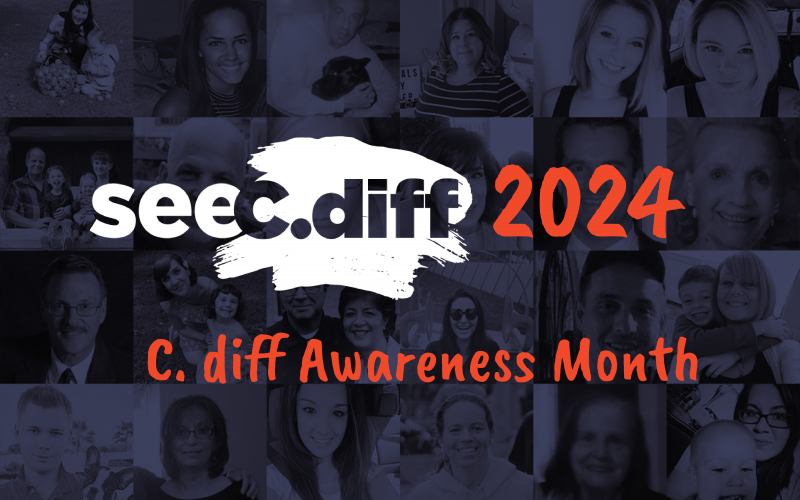Other Categories
Last Tuesday, I had the great privilege of being part of an all-day meeting on eliminating hospital acquired infections (HAIs), including clostridium difficile (C. diff) at the Centers for Disease Control in Atlanta. The meeting was arranged by the CDC in partnership with Consumers Union’s Safe Patient Project, of which the Peggy Lillis Memorial Foundation is a member. It brought together several patient safety activists and more than 20 CDC experts including several senior staff members, including Dr. Denise Cardo, head of Health Quality Promotion, and Dr. Cliff McDonald, Chief of the Prevention and Response Branch of Health Quality Promotion and the CDC’s leading expert on C. diff.
I’m still processing all the information we learned and all the ways that the foundation can work with the CDC. But I left Atlanta full of incredible hope and extremely proud of all the hard work we’ve done to get us to this point. Sitting next to Dr. McDonald and listening to an amazing coterie of experts, each of whom had incredible passion for eliminating HAIs, was both humbling and inspiring.
Perhaps the most energizing aspect of the meeting was seeing how upset the CDC staff were by the growth in death and harm caused by HAIs. Many doctors who work for the CDC came to it before the modern patient safety movement, most often spurred on by the failure of the institutions where they worked to reduce avoidable harm. Some were frustrated by the fact that HAIs are a largely preventable problem and the primary reasons we haven’t eliminated them is not lack of knowledge but of resources, particularly financial resources, and the political will to insist that the healthcare industry do better. One staff member became visibly angry when discussing the rampant nature of HAIs in nursing homes. These are not bureaucratic “drones” that government employees are often portrayed as in the media. Nearly every single person I interacted with was committed to saving lives.
Early on in the meeting, Dr. Cardo said, “We are all patients.” The truth of that statement reverberated throughout the auditorium. No matter our current health status, at some point every single American is a patient. Shortly after the meeting began, the head of the CDC Dr. Thomas Frieden came to speak to the group. Though Dr. Frieden was only supposed to spend ten minutes with us, he actually remained for over a half-hour engaging in conversation and answer questions. Dr. Frieden was unequivocal in saying “healthcare associated infections are unacceptable.” Frieden was also clear that we need to develop systems within healthcare that compensation for human error. He said, “it’s not about getting people to be perfect. It’s about getting systems and fail-safes in place that prevent harm.” Finally, Dr. Frieden emphasized the importance of patient’s stories, saying “we need to see the lives and faces behind the numbers” if we’re going to make progress.
As the day progressed, there were many excellent conversations and brainstorming sessions. Highlights of the rest of the day include:
- Learning the the CDC has three main goals around HAIs: Improved adherence to their guidelines by healthcare providers; increased surveillance and tracking of HAIs, and increasing the capacity of state health departments since healthcare is “primarily a state affair.”
- Hearing that one of the CDC’s key challenges is that public health has “no natural feedback loop”, so they have to engage patient groups to assess how they’re doing.
- Learning about the stark public health challenges caused by the rise of ambulatory surgery centers, a full 80% of which are not owned by a hospital (even when they are physically located on a healthcare campus) and only 25% of which are accredited by the Joint Commission (which accredits hospitals). These facilities are often staffed by per diem nurses, radiologists, and anesthesiologists, making it very difficult to ensure consistent and high-quality care.
Finally, a significant part of the meeting was set aside for a discussion of C. diff. The CDC staff seemed particularly perturbed by the lack of progress made in stemming the growing tide of death and harm it causes. There was acknowledgment that prior to 2000, C. diff was largely seen as a “nuisance” infection with a low death rate. But since the CDC began surveillance, they have noted (as many public health experts have) the increasing rates of death and harm caused by C. diff. One CDC expert said that C. diff is the “poster-child” for the “portability of HAIs” (or the ability for infections to be transferred from one patient/healthcare worker/facility to another and even into the community). Since the meeting, PLMF has been in touch with several CDC staff member and we look forward to working with them to increase our mutual impact in minimizing death and disability arising from C. diff.



Leave a Reply